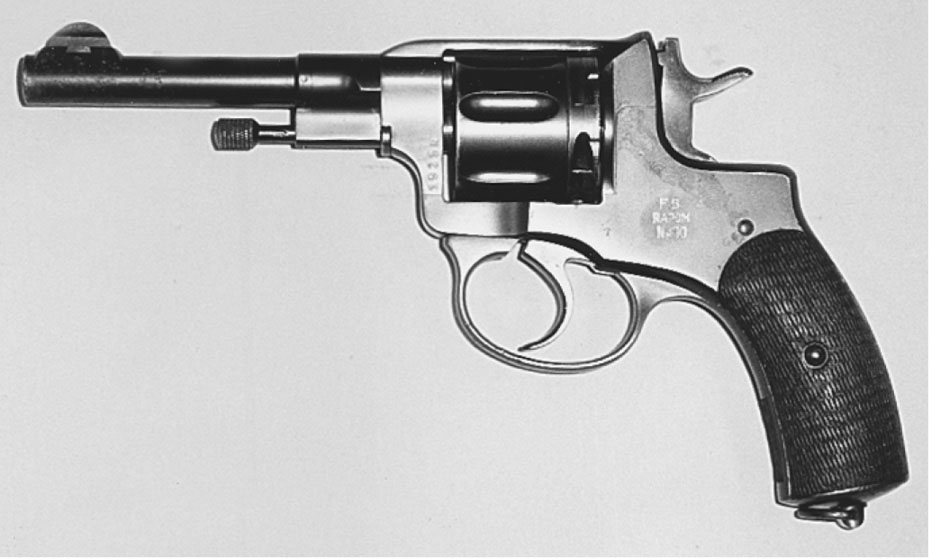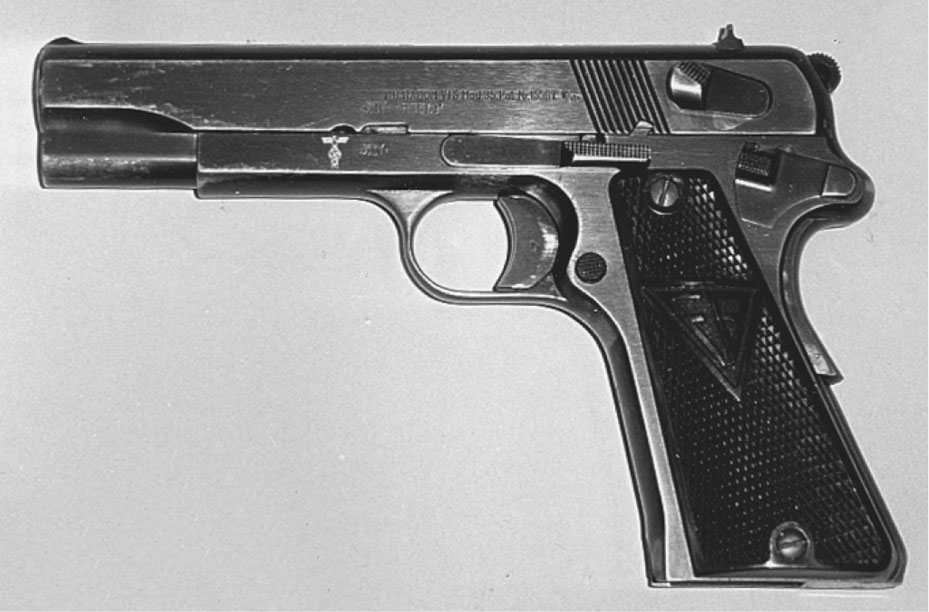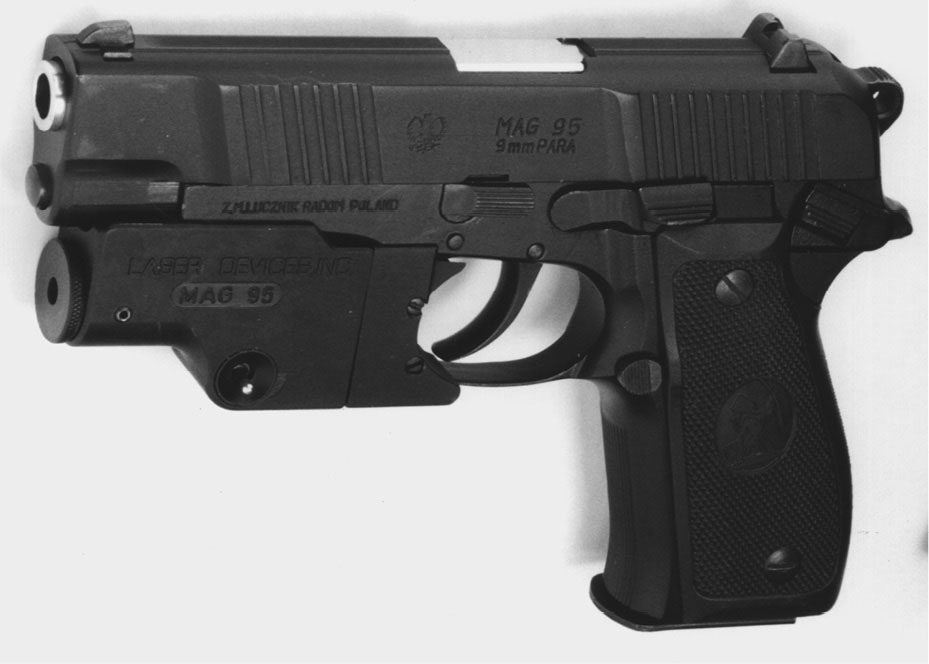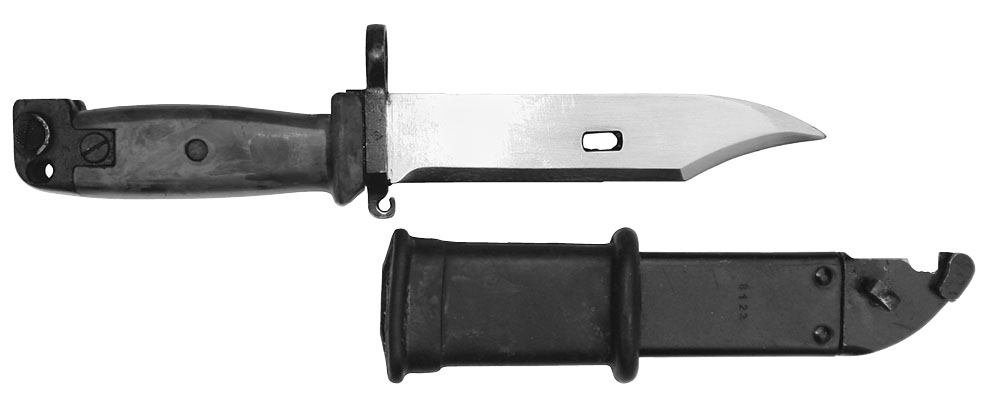

The Republic of Poland, located in central Europe, has an area of 120,725 sq. mi. (312,680 sq. km.) and a population of *38.2 million. Capital: Warszawa (Warsaw). The economy is essentially agricultural, but industrial activity provides the products for foreign trade. Machinery, coal, coke, iron, steel and transport equipment are exported.
Poland, which began as a Slavic duchy in the 10th century and reached its peak of power between the 14th and 16th centuries, has had a turbulent history of invasion, occupation or partition by Mongols, Turkey, Transylvania, Sweden, Austria, Prussia and Russia.
The first partition took place in 1772. Prussia took Polish Pomerania, Russia took part of the eastern provinces, and Austria occupied Galicia and its capital city Lwów. The second partition occurred in 1793 when Russia took another slice of the eastern provinces and Prussia took what remained of western Poland. The third partition, 1795, literally removed Poland from the map. Russia took what was left of the eastern provinces. Prussia seized most of central Poland, including Warsaw. Austria took what was left of the south. Napoleon restored to Poland much of the territory lost to Prussia and Austria, but after his defeat another partition returned the Duchy of Warsaw to Prussia, made Kraków into a tiny republic, and declared what remained to be the Kingdom of Poland under the czar and in permanent union with Russia.
Poland re-emerged as an independent state recognized by the Treaty of Versailles on June 28, 1919, and maintained its independence until 1939 when it was invaded by, and partitioned between, Germany and Russia. Poland’s present boundaries were determined by the U.S.-British-Russian agreement of Aug. 16, 1945. The Government of National Unity was replaced when the Polish Communist-Socialist faction claimed victory at the polls in 1947 and established a Peoples Democratic Republic’ of the Soviet type in 1952. On December 29, 1989 Poland was proclaimed as the Republic of Poland.
(Fabryka Broniw Radomu)
This company was established after WWI and produced military arms for Poland. During WWII the Radom factory was operated by the Nazis. Production was not resumed after the war.
Ng 30
A copy of the Russian Nagant revolver chambered for the 7.62mm Russian cartridge. Approximately 20,000 were manufactured during 1930 and 1936.

Courtesy Richard M. Kumor Sr.
Exc. |
V.G. |
Good |
Fair |
3000 |
2300 |
1500 |
500 |
VIS-35
A 9mm semi-automatic pistol with a 4.5-inch barrel, fixed sights, and an 8-shot magazine. On this model there is no manual safety; however, a decocking lever is installed that allows the hammer to be safely lowered on a loaded chamber. Versions made prior to WWII are engraved with a Polish eagle on the slide and “FB” and “VIS” are molded into the grips. These prewar pistols are slotted for a holster stock. German production pistols were made without the decocking lever and subsequently without the stripping catch. They also eliminated the stock slot. These pistols were stamped “P35P” and bear the Waffenamt inspector’s mark “WaA77.” Near the end of the war, the take-down was eliminated and the grips were replaced with crude wooden grips. The slide, barrel, and frame are all numbered to match. Deduct 25% for miss matched parts
NOTE: Prices quoted are for 1939 dated guns. Earlier years bring a significant premium.
Polish Eagle Model-1936 through 1939
Exc. |
V.G. |
Good |
Fair |
3500 |
2000 |
1500 |
750 |

Polish Army issue VIS-35 • Courtesy Rock Island Auction Company

Courtesy Richard M. Kumor Sr.
Nazi Captured Polish Eagle—Waffenamt Marked
Exc. |
V.G. |
Good |
Fair |
4000 |
3500 |
1800 |
650 |
Nazi Polish Eagle (Navy marked)

Courtesy Richard M. Kumor Sr.
Nazi Production Model (Model 35[p])
Type 1 features 3 levers and stock slot
Exc. |
V.G. |
Good |
Fair |
1200 |
850 |
650 |
200 |

Courtesy Richard M. Kumor Sr.
Type 2 features 3 levers and no stock slot
Exc. |
V.G. |
Good |
Fair |
850 |
700 |
500 |
350 |

Radom VIS-35 magazine with German marking. Price 150-60
Type3 features 2 levers and no slot
Exc. |
V.G. |
Good |
Fair |
750 |
600 |
450 |
300 |
Nazi Type 3 made by Steyr
Most have grooved wood grips.
Exc. |
V.G. |
Good |
Fair |
1500 |
1100 |
850 |
450 |
Nazi Type 3 “bnz” code
Exc. |
V.G. |
Good |
Fair |
3500 |
2500 |
1200 |
650 |
Leather holster for Radom P-35
Similar to German P-38 type. Top flap. Wartime versions have a single magazine pouch on the front. Pre-war Polish holsters have two magazine pouches. Add 50% for pre-war holster.

Exc. |
V.G. |
Good |
Fair |
250 |
175 |
125 |
100 |
VIS-35 Reissue
This is an exact copy of the original VIS-35 pistol. Limited to 100 pistols with fewer than that number imported into the U.S. The importer, “Dalvar of USA,” is stamped on the barrel.
NIB |
Exc. |
V.G. |
Good |
Fair |
2300 |
— |
— |
— |
— |
Model 64
A PPK size pistol chambered for the 9mm Makarov cartridge. Appeared on the U.S. market in 2005, most in unissued condition.
Exc. |
V.G. |
Good |
Fair |
275 |
225 |
175 |
N/A |
Tokarev (Pistolet TT)
Polish copy with manual safety added to comply with U.S. import regulations.
Exc. |
V.G. |
Good |
Fair |
400 |
300 |
250 |
150 |
NOTE: Add 100% if there is no added safety.
P-83
This pistol is chambered for the 9×18 (Makarov) cartridge. It is fitted with a 3.5-inch barrel and has a double action trigger with decocker. Magazine capacity is 8 rounds. Weight is about 25 oz. Black oxide finish. Developed in the early 1970s, it is similar to a Makarov pistol except it is built from stampings. Used by Polish army and security forces. A small number of commercial pistols was imported in the early 1990s.


NOTE: Several thousand Polish military issue P-83’s were imported in 2009 and are currently available on the U.S. market.
Exc. |
V.G. |
Good |
Fair |
350 |
300 |
275 |
N/A |
P-93
Similar to the P-83 differing only in cosmetics but chambered for 9mm Makarov only. The decocking lever is on the frame instead of the slide. Barrel length is 3.9 inches. Black oxide finish.
Exc. |
V.G. |
Good |
Fair |
400 |
275 |
250 |
N/A |
MAG-95
This pistol is chambered for the 9mm Parabellum cartridge and fitted with a 4.5-inch barrel. Magazine capacity is 15 rounds. Trigger is double action with external hammer. Weight is about 38 oz. Black oxide finish. Optional 20-round magazine. In use by Polish forces on NATO duty. Limited U.S. importation in the 1990s.

Exc. |
V.G. |
Good |
Fair |
550 |
500 |
450 |
— |
NOTE: Poland was supplied with Soviet made PPSh M1941 and PPS M1943 submachine guns.
M1943/52
This gun is a Polish-built modification of the Soviet PPS M1943 submachine gun in 7.63mm caliber. It is select fire and is fitted with a 9.5-inch barrel. Magazine capacity is a 35-round box. Rate of fire is about 600 rounds per minute. Weight is approximately 8 lbs. Wooden buttstock.
Pre-1968

Exc. |
V.G. |
Fair |
20000 |
17500 |
15000 |
WZ-63
Introduced in 1964, this submachine gun is a small, almost pistol-size weapon chambered for the 9×18mm Makarov cartridge. It is fitted with a 6-inch barrel with folding metal butt. The folding is designed to be used as a front vertical grip, if desired. A noticeable spoon-shaped muzzle compensator is used. Magazine is a box type with 15- or 25-round capacity. Rate of fire is about 600 rounds per minute. Weight is approximately 4 lbs.
Pre-1968
Exc. |
V.G. |
Fair |
20000 |
17500 |
15000 |
NOTE: Poland began producing Mauser rifles and carbines in early 1902 at the Warsaw arsenal.

Polish 98 Mauser • Courtesy Paul S. Scarlata
M98 Rifle
This rifle is similar to the German Gew 98 with a tangent rear sight instead of the German style. Nearly full stock with pistol grip and finger grooves on the forend. Half length upper handguard. Many were assembled from German parts. Some will be found with small Polish Eagles stamped on the bolt knob.
Exc. |
V.G. |
Good |
Fair |
850 |
700 |
550 |
250 |
M98AZ Rifle
This rifle is the same as the German Model 98AZ, and was assembled using German WW1 parts. In addition to the standard placement of sling swivels, a sling bar is fitted to the left side of the stock. Polish wood is used on the stock in place of walnut. These are found both with and without Polish markings on the receiver. Price shown assumes Polish markings. An unmarked M98AZ will bring up to 50 percent less.

Exc. |
V.G. |
Good |
Fair |
950 |
750 |
550 |
300 |
Wz29 Short Rifle
This rifle was built at the Radom factory. Barrel length is 23.6 inches and caliber is 7.92×57mm. Straight bolt handle. Almost full stock with pistol grip and grasping grooves on the forestock. A sling bar is fitted to the left side of the stock. Tangent leaf rear sight graduated to 2,000 meters. Weight is about 9 lbs.
Exc. |
V.G. |
Good |
Fair |
1000 |
800 |
600 |
400 |
Wz 98a Rifle
Exc. |
V.G. |
Good |
Fair |
1000 |
800 |
600 |
400 |
Wz29 .22 Caliber Training Rifle
Exc. |
V.G. |
Good |
Fair |
2000 |
1700 |
1200 |
750 |



Polish Wz 29 • Courtesy Richard M. Kumor Sr.
Kbk8 Wz31 .22 Caliber Training Rifle
Exc. |
V.G. |
Good |
Fair |
2000 |
1700 |
1200 |
750 |
Bayonets for Polish Mausers
Poland used German 98-05 bayonets on their Gew-98 rifles. After WWI they produced their own bayonets that are patterned after the German K98 type. They were made by two makers and will bear the maker’s name and/or a Polish eagle and a serial number on the ricasso. F.B. Radom was made with a muzzle ring, although the rings were often removed by the Germans during WWII. Perkun made bayonets without the muzzle ring. Price range 175 – 50.
Wz 48 .22 Caliber Training Rifle
Produced after WWII as a training rifle. It is based on the Mosin Nagant Model 1938 but with a longer barrel.

Exc. |
V.G. |
Good |
Fair |
350 |
250 |
175 |
N/A |
Wz 78 .22 Caliber Target Rifle
Produced in the 1980s as a target rifle for military cadets and youth shooting clubs. Marked “WIFAMA” on the receiver. It has a 26” barrel and weighs about 8 lbs. Features removable iron sights and an adjustable trigger. 5-round detachable magazine. Some were imported to the U.S. around 2009.

Exc. |
V.G. |
Good |
Fair |
400 |
275 |
175 |
N/A |
Polish Model 1891/30 Sniper Rifle
These are the Soviet rifles used by the Poles but refinished. Polish sniper rifles are identified by the serial numbered mounting rails being the same as the scope.
Exc. |
V.G. |
Good |
Fair |
1200 |
900 |
700 |
400 |
Model 1891/98/25 Polish Nagant
The production of these rifles started in the early 1920s at the Warsaw arsenal. Chambered for the 7.92mm cartridge but fitted with a bayonet lug and stamped with a small crowned Polish Eagle on receiver and bolt. It has a 23.5-inch barrel with 5-round non-detachable box magazine. Leaf rear sight. Weight is approximately 8 lbs. A very rare variation. Original, unaltered examples will command a premium price. About 77,000 of these rifles were produced.

PMK-DGM • Courtesy West Point Museum, Paul Goodwin photo

Polish 1891/98/25 Rifle • Courtesy Richard M. Kumor Sr.
Exc. |
V.G. |
Good |
Fair |
1100 |
900 |
700 |
400 |
Polish Model 1944 Nagant
Produced in Poland from 1950 until about 1962. Polish markings on the receiver, stock, and barrel. Poland’s factory code 11 on receiver Many of these were imported in recent years. Many were in unissued condition. Examples without import stamps probably came in from Canada in the 1980s.
Exc. |
V.G. |
Good |
Fair |
450 |
350 |
250 |
125 |
KbKg Model 1960 or PMK-DGM and PMKM
All of these rifles are copies of AK-47 variations. Both the PMK and PMKM are sometimes equipped with grenade launchers fitted to the muzzle.
Pre-1968
Exc. |
V.G. |
Fair |
30000 |
27500 |
25000 |
Bayonet for Polish PMK (AK-47)
Red plastic handle. 5.8-inch single edge blade with cutting edge to the top. No serrations on the back. Price range 45 – 20.
NOTE: Poland used a variety of foreign-built machine guns prior to WWII. Some of these were the Browning Model 1917s and the BAR. Both of these guns were chambered for the 7.92mm cartridge. After the war Poland used Soviet-issued weapons.

Bayonet for Polish PMK (AK-47)
Polish BAR (Wz28)
This Polish BAR was chambered for the 7.92×57mm cartridge with skids on its bipod instead of spikes and a bipod attached to the gas regulator instead of the muzzle. Barrel length is 24 inches with AA ring sight base. Approximately 12,000 Polish-built BARs were produced between 1930 and 1939. These guns are marked “R.K.M. BROWNING WZ. 28 P.W.U.F.K. [DATE] [SERIAL NUMBER]” located on the receiver. A number of these guns (est. 500) saw service in the Spanish Civil War and were used by German military forces.
Pre-1968
Exc. |
V.G. |
Fair |
25000 |
22500 |
20000 |


Polish Wz 28 • Courtesy private NFA collection, Paul Goodwin photo